If you've opened a novel and seen a quote on the opening pages then you've seen a literary epigraph. But what are they really? Why do authors use them? And how do you know if you need one for your own work in progress?
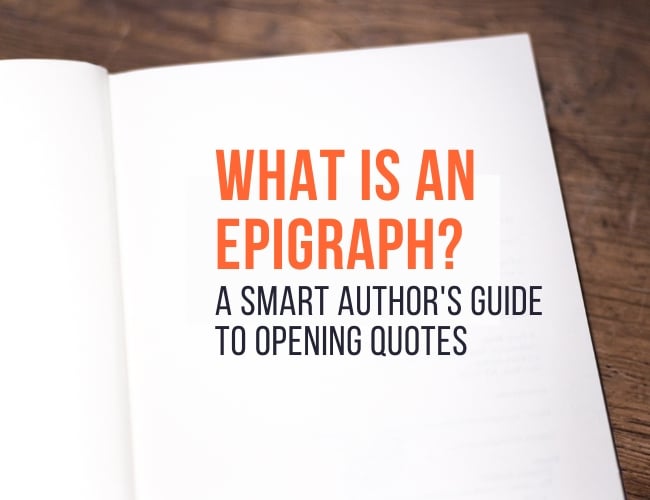
What is an Epigraph?
The word epigraph means to “inscribe” or “to write on.” A literary epigraph is usually a short or block quote from another piece of literature (usually well-known) that gives the reader a sense of what's to come. This technique of using a quote from another author to introduce a novel's tone, content, or summary is called an epigraph.
Epigraphs will be enclosed in quotation marks most of the time since they are direct quotes, and the title or author will usually accompany the quotation.
Sometimes an epigraph can be a fictional quotation, such as at the beginning of John Green's book The Fault in Our Stars. It begins with a fictional quote from a book called An Imperial Affliction which doesn't exist outside the novel but is important for the storyline of the entire book.
Where is an Epigraph Located?
A single epigraph usually appears on the first page of a novel, before the action begins, but it can also make appearances throughout a story. It can be especially powerful at the end of a work, depending on the denouement.
You might also see epigraphs pop up in between parts of a book, if a novel is sectioned into acts, in order to aid in the transition of the narrative. Or an epigraph might intentionally mislead when the actual content of the story subverts this expectation, and the epigraph is meant to be taken more satirically.
Where Can an Epigraph Come From?
Anywhere! Quotes can come from other works of fiction, proverbs, religious texts, nonfiction writings, song lyrics, journalistic pieces, or film or television scripts, among other sources. You could even use American Sign Language in your epigraph if it's relevant to the novel's contents.
The choice of source in addition to the actual content sets expectations, and gives clues to the reader for how to approach the story. A quote from a comic strip is likely going to set different expectations than one from a Shakespeare play.
An epigraph that cites the writings of Carl Jung might indicate that the work should be approached a bit more clinically than if it had been taken from the Sermon on the Mount in the New Testament of the Christian Bible.
What are Some Famous Examples from Literature?
One of my favorite examples of epigraphs is in National Book Award winner, Jesmyn Ward's novel Salvage the Bones. She uses three quotes, one Biblical, one from a poet, and one from a modern song lyric:
“See now that I, even I am he, and there is no god with me; I kill and I make alive, I wound and I heal, neither I there any can deliver out of my hand.” Deuteronomy 32:39
“For thought I'm small, I know many things,
And my body is an endless eye
Through which, unfortunately, I see everything.” Gloria Fuertes, “Now”
“We on our backs staring at the stars above,
Talking about what we going to be when we grow up,
I said what you wanna be? She said, ‘Alive.'” Outkast, “Da Art of Storytelling' (Part I),” Aquemini
This combination of quotes works together to set the tone and to foreshadow the fight for survival that is coming for the story's young narrator Esch Baitiste facing pregnancy, poverty, and Hurricane Katrina's impending reckoning.
The Sun Also Rises by Ernest Hemingway contains two epigraphs, one from his contemporary Gertrude Stein and the other from the Bible:
“You are all a lost generation.”
-Gertrude Stein in conversation
“What profit hath a man of all his labour which he taketh under the sun? One generation passeth away, and another generation cometh: but the earth abideth for ever. The sun also ariseth, and the sun goeth down, and hasteth to his place where he arose…”
-Ecclesiastes
Hemingway puts these two quotes in conversation before the novel even begins and in a sense tells us where he got his title for the novel. The reader is left asking what creates a lost generation and what is the role of this life cycle referenced in Ecclesiastes?
In Gillian Flynn's thriller, Gone Girl, she begins with a quote from Tony Kushner's The Illusion:
“Love is the world's infinite mutability; lies, hatred, murder even, are all knit up in it; it is the inevitable blossoming of its opposites, a magnificent rose smelling faintly of blood.”
See the references to love and murder and how the two intertwine? That one sentence gives the reader an idea of what you're getting yourself into.
Should You Use an Epigraph in Your Novel?
Obviously the answer depends on the book and what you're trying to accomplish. Epigraphic quotes need to be more than just quotes that inspire you.
The main thing to keep in mind with an epigraph is that the chosen text should relate back to the story at hand, whether it foreshadows events to come, highlights a point that the author wants to make, or introduces a new theme to in a section of the work.
Whether you choose a witty statement or a quote from a scholarly book, ask yourself how the quote functions in relationship to the whole. Does it set the tone? Hint at theme? Spark curiosity? If so, it might be a solid choice.
Epigraphs can feel like a shared secret that can only be fully known once the entire book is finished. As a literary device, it's like a bow on a beautifully wrapped package: enhancing the contents and their delivery.
What's one of your favorite books with an epigraph? Extra credit if you can find the epigraph and share it with us in the comments section!
Need grammar help? My favorite tool that helps find grammar problems and even generates reports to help improve my writing is ProWritingAid. Works with Word, Scrivener, Google Docs, and web browsers. Also, be sure to use my coupon code to get 20 percent off: WritePractice20
PRACTICE
Set your timer for fifteen minutes. Find a quote (or several!) that could serve as an epigraph for your work in progress. If you don't have a work in progress, find a quote that would fit a classic whodunit.
Write Practice Pro community members can post your epigraph(s) here in the practice workshop, letting us know why you chose that quote.
Not a member yet? We'd love to have you join our writing community here.
Happy hunting!
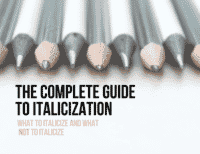
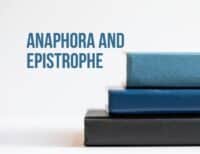
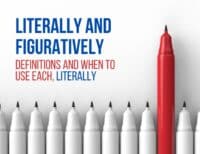
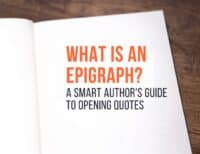



What a great article!! My WIP is about two sisters, at odds with one another for many years, are brought together by a tragic accident. This quote I found on Good Reads, summarizes well.
“Sisters, as you know, also have a unique relationship. This is the
person who has known you your entire life, who should love you and stand
by you no matter what, and yet it’s your sister who knows exactly where
to drive the knife to hurt you the most.”
―
Lisa See
Christy… may I suggest you only use the last few words of that quote, which is very long and doesn’t really sound like an epitaph. But if I read: “It’s your sister who knows exactly where to drive the knife to hurt you the most,” I’d be compelled to dig in to your novel.
Great advice!! Thank you.
The “epigraph.” I love and hate them. I often don’t understand them, which annoys me, and I think I must be an idiot, so there we are getting off on the wrong foot, and I’m thinking the author is full of himself and his superior wisdom, especially if the quote is in Latin! Well, la-di-da, the writer studied Latin. In any event, I’m considering an epitaph in my own WIP… and I know you’ll be impressed when I tell you that it’s a quote from Heraclitus: “It is the opposite that is good for us.” That being the underlying truth about the human journey — we strive for such and such only to discover that “In the opposite of our principles lies our truth.” Which, if I were famous, someone might deploy that phrase of mine as an epitaph in their own opus. But there I am dreaming. So I’ll take this dream state back to my writing, right now, Cheers.
Nice timing! My WIP will be having several epigraphs spread throughout. (In fact, start of each chapter).
My favourite segue is the first chapter, which has a few lines out of a Swedish poem called “To Decay” (it’s written as a love poem to death/decay) as the intro, and then we find the two main characters at a burlesque strip club.
EpiGRAPH and epiTAPH are not interchangeable, right? VERY different things. Check it above in a couple of places . . .
AH! Very true. I added the headers and practice, so all the blame goes on me. I’ve fixed it. Thanks Diana!
Oh Joe! Shame shame;( We love you anyway.
I love this idea! It adds so much interest to a story, Like a piece of jewelry to an outfit. I have a question: frequently it is a line of lyrics from a song I’d like to use. If the song writer is still living, do you need to ask permission or is it sufficient to simply reference the song?
Ahh…this seems like a super hard task. I don’t even know where to begin finding quotes and making sure they’re perfect for the story.
Call me Ishmael.
Like the first Ishmael, I am the first born son of a man who loves his second born better. I roam the earth, the black sheep of the family. The one they whisper about.
Like the second Ishmael, I hunt. Not whales. People.
People of every kind. But most of all I hunt the one who is as elusive and as dangerous as the White Whale. In the ocean of faces, my whale camouflages. Just another face in the midst of everyone else.
I scan the people. They walk in masses, shoulders laden with bags, phones glued to ears and fingers. Somewhere in this multitude is the one that I seek.
I wonder what will cue me in to this shape shifter. An extra spring in the step? Or perhaps an added drag in the feet, a scrape of boots on the grimy sidewalk. Will the eyes meet me head on or pretend to not see me?
I stand in the center of the square, one cigarette ending and the next seamlessly lit in succession. I watch, I wait.
A girl, hair all long and wavy, walks by me. She smiles at everyone except for me. She moves like a goddess.
I turn my head just a little. The wind catches up her hair and her red scarf and blow them toward me. They caress my face together.
She keeps walking. She probably thinks that I am part of the lamppost, all straight and black and metallic. One hair remains. It droops between my lips, a taste of her silkiness, a ray of her sunniness.
My mind drifts away. Clenching my fists, I hurl a harpoon at it and haul it back. Focus, Ishmael. Find the whale.
Nicely done !!! Instead of the epigraph being just a segue to your passage, you have managed to make it such a core part of your story. Love it !
I had lots of fun with this one. For the record, I never actually finished Moby Dick. It was one of those books that draaaggggeedd on forever. I heard the summary from a friend and decided that was enough for me. But Herman Melville’s first line was brilliant.
This is really good Elise. It incorporates the epigraph into the text and it arrests. I am wondering now who or what the narrator is. Why is he or she so invisible, so straight and black and metal -like.
I described the narrator as the narrator feels about himself. He feels rigid, perhaps even steel like in his efforts to control all emotion.
But to the passerby, he could just be an average looking dude standing by a lamppost, not even worth noting.
Or maybe he’s invisible and can morph into things, like lampposts.
Or maybe he is a lamppost.
That’s the fun with 15 minute challenges. They open whole worlds of opportunity.
This is great Elise. I love the language you use and the way you’ve incorporated the quote into the overall piece.
The stoccato sentencing works well and creates an atmosphere that I think most writers will undoubtedly identify with: standing and watching and observing and imagining ‘What if …’
“The idea that truth always triumphs over persecution is one of those pleasant falsehoods, which most experience refutes. History is teeming with instances of truth put down by persecution. If not put down forever, it may be set back for centuries.” – John Stuart Mill
My new book I’ve just started writing (that I’m REALLY FREAKING EXCITED ABOUT!), is about a religious sect who, after being forced to live in secret underground for 300 years, have begun to resurface through the leadership of a prophetic child. The mainstream community is afraid and misunderstands them as a threat and a dramatic clash of beliefs ensue!
It’s been said that our homes reflect the character and appearance of the inhabitants…” If so, then Katie McPherson proved an apt description of her abode. Katie was twelve years old, with long, dark stringy hair and smudges on her brow. Her skinny legs ended with worn loafers which dragged her over the cracked cement towards the door of the small, shabby home on Hanover Lane. Her well-worn dark skirt had a sagging hem while the white blouse exhibited a torn cuff with wrinkles throughout her clothes. The house had a similar unkempt appearance. Paint peeled on the main structure as well as the window panes. A faded board was nailed over a broken window and the dying front bushes seemed too weary to even produce one bloom. The front door opened with a loud creaking sound that bore no welcome to Katie. She paused as she peered into the darkened room. She felt the discomfort of being inside but knew there were chores awaiting her. A sour smell of dirty dishes and overflowing garbage assaulted her senses. She slipped off her shoes and crept towards her small bedroom. At least there was a place she could feel secure.
This is the beginning of my YA novel and hope it can reflect how the main character felt the insecurity of where she lived and how she reflected her own image that was in keeping with her home’s appearance. Is this what you mean by epigraph? I hope so as I am going to describe the other members of the family as those who are deficient in character traits such as the father being an alcoholic while the mom is a depressed person who gives no affirmation to Katie.
I liked your descriptions, especially the one about the weary bushes.
However, it sounded a little mundane when you described her clothing in such detail.
It might be better to say “she self consciously dabbed her thumb over the torn cuff on her wrinkled white blouse, hoping that maybe she could smooth the frayed edges away” or something like that rather than just giving the run through on the color and style of her clothing.
If you really want to reflect Katie’s image, merely telling what she is wearing may not be enough. You have to show us how Katie feels about her clothing. She probably isn’t thinking too much about the color (unless its really ugly or stained), but more about how shabby everything looks, just like the exterior and interior of her house.
Hey Kathy. I agree with Elise. It’s got a nice feel to the piece but perhaps you could incorporate the descriptions into Katie’s thoughts. eg.
‘…Twelve years old and with long, dark stringy hair and a smudged brow, she gazed down her long legs. They’re skinny, she mused, and I needsome new loafers. She noticed how worn they appeared as she dragged them over the cracked cement towards the door of the small, shabby home on Hanover Lane…’
Keep it up 🙂
@daveynorthcott:disqus
http://daveynorthcottauthorwriter.wordpress.com/
My favorite epigraphs are:
From To Kill a Mockingbird (Harper Lee): “Lawyers, I suppose, were children once” -Charles Lamb
From Night Circus (Erin Morgenstern): “For a dreamer is one who can only find his way by moonlight, and his punishment is that he sees the dawn before the rest of the world.” -Oscar Wilde
I’m currently writing a story about a man who loses his memories and goes wandering around New York City to retrieve them. Thinking of using: All that we see or seem is but a dream within a dream.” ― Edgar Allan Poe
“After carefully considerin’
The whole situation,
And I stand with my back to the wall —
Walkin’ is better
Than runnin’ away,
And crawlin’ aint no good at all.”
~~Willie Nelson, “Walkin'”, *Phases and Stages*
A good description of the predicaments a person gets himself into, not realizing what will be required from him or how much it will cost. The situation on longer tenable, walking away has a lot more dignity than either running or crawling. I know because I’ve done all three in different instances. Truer words have never been written.
I unwrapped my love for her like one might unwrap leftovers. Gotta eat up the old stuff first, as a cannibal might say in a retirement home – Dark Jar Tin Zoon, Love Quotes for the Ages
For a detective story about a series of murders whose clues suggest an archaic cannibalistic ritual, but are actually an elaborately retold tale meant to uncover an equally horrible modern day bonded-slavery operation
That quote could be applied interestingly to your story. Just a thought, but the men paying for the modern day bonded-slavery operation, the ones funding the gross injustices upon countless human lives, do so to stir their own passions. These men prey on who they can hurt first with the least repercussions (the trafficked woman/girl) before moving their sights on prey closer to home.
HI Elise. The bonded slavery operation isn’t about sex workers this time. It’s about migrant labourers forced to work in food processing plants. But yes, it’s to feed the appetites of greedy people in the city.
“Life is a habit that’s hard to break.” – Terry Pratchett, The Reaper Man.
That would be the perfect epigraph for The 100-Year-Old Man Who Climbed Out the Window and Disappeared, by Jonas Jonasson.
I love this quote! Brilliant!
Great post! I am so into epigraphs. I think every story I’ve written/am working on features an epigraph and it’s always significant to the story themes and/or plot.
In relation to my debut novel, ‘The Path Through the Eye of Another’, I found these two possibilities. Nice.
“A
path is little more than a habit that comes with knowledge of a place … It is not destructive. It is the perfect
adaptation, through experience and familiarity, of movement to place;
it obeys the natural contours; such obstacles as it meets it goes
around.”
―
Wendell Berry,
The Art of the Commonplace: The Agrarian Essays
“When you find your path, you must ignore fear. You need to have the
courage to risk mistakes. But once you are on that road… run, run,
run, and don’t stop til you’ve reached its end.”
―
José N. Harris,
MI VIDA: A Story of Faith, Hope and Love
Twitter @daveynorthcott:disqus
http://daveynorthcottauthorwriter.wordpress.com/
Would song title be considered epigraphs? I use them for my title chapters which set the mood and and then if you listen to the song you get the an added sense of the emotions and aura of that chapter. Plus, my novel has a soundtrack 🙂 Plus I love introducing people to new music!
One of my all time favorite novels, Crossing to Safety by Wallace Stegner takes its title from a Robert Frost poem “I Could Give All to Time”, which is also the epigraph for Stegner’s book.
“I could give all to Time – except
What I myself have held. But why declare
The things forbidden that while the Customs slept
I have crossed to Safety with? For I am There
And what I would not part with I have kept.”
The story is about one day in the life of two couples, as they enter their golden years, and the reflection, quietude, and deep insight that follows the trajectory of their friendship from beginning to end. The epigraph quite aptly sets the tone and theme of the book, which is, “why are we who we are and how did we get that way?” Through the epigraph you instinctively know this book is about love, the company and solace of true friends, the quiet loyalty that people often show to each other, and the fortitude of a well-lived life. It’s about people living their lives through time and the things that you take with you in the discovery of who you are.
My all time favorite epigraphs are the ones from Lauren Oliver’s novel Delirium.
Delirium is set in a world not to far in the future where love is considered a disease. And Lauren Oliver did such a good job with it, naming off symptoms that are all very true. She left us pondering why we all adore the emotion love and why we don’t run away screaming at the mere thought of it. It was so intriguing to visit a world where there was a cure for love and where there was actually a law forbidding people from falling in love. It was an interesting take on the classic love story. Best of all there were no cliches. No love triangle at all, a rare find now in romantic literature. The epigraphs were fabulous. Oliver created an entire world to share with us. In the amazing epigraphs there were bedtime stories, rewritten bible verses, excerpts from history and health books, even nursery rhymes. A look into this world will leave you stunned, and the epigraphs will keep you gasping for more.
Now for epigraphs I think would go nice in my current book, ‘Countdown To Love’
Are you tired of sitting around waiting for love? Your days of watching and wondering are over. Say goodbye to heartache and disappointment. Now you can be on the clock – true love on a schedule. Get The Countdown; a revolutionary device that tells you not only WHO your soul mate is, but WHEN you’ll meet them. Countdown- take the guess work out of love. ~TIMER
If a clock could count down to the exact moment you meet your soul mate, would you want to know? ~ TIMER
I May Never Sleep Tonight as long as your still burning bright ~ Panic! At The Disco
Love may guide you home ~ Unknown
I am a bit biased, being a fan of theirs, but I like the P!ATD quote.
The title of my WIP, Murder Most Foul, is taken from this quote, so I think it would be a fitting epigraph:
Murder most foul, as in the best it is.
But this most foul, strange and unnatural. – Hamlet, Act I:V
Can an epigraph be a graphic? Or does it then go by another name?
Friendship is a thing you can gain, and not you can’t buy
I’ve cheated and looked in a book of quotes. I used to read this 4 inch book for pleasure and had forgotten what a treasure trove it really is. Here’s what I found for this week’s story.
-All arguments is against it, but all belief is for it. – Samuel Johnson, referring to the appearance of men’s spirits after death. (Boswell, Life, 1778)
-Ghosts, like ladies, ever speak till spoke to. R.H. Barham, The Ghost.
Either of these will work well.
Phyllis
I just finished The Great Alone by Kristin Hannah
A quote at the beginning of her book
Nature never deceives us; it is always we who deceive ourselves.
Jean-Jacques Rousseau
Love this one, especially for that book. Thanks for sharing!